Rose Breasted Cockatoo Parrots For Sale
$850.00
Rose Breasted Cockatoo Parrots For Sale
Description
classification of the Galah was difficult. It was separated in the monotypic genus Eolophus, but the further relationships were not clear. There are obvious morphological similarities between the galah and the white cockatoos that make up the genus Cacatua and indeed the galah was initially described as Cacatua roseicapilla. Early DNA studies allied the galah with the cockatiel or placed it close to some Cacatua species of completely different appearance. In consequence, it was thought that the ancestors of the galah, the cockatiel and Major Mitchell’s Cockatoo diverged from the main white cockatoo line at some stage prior to that group’s main radiation; this was indeed correct except for the placement of the cockatiel. Ignorance of this fact, however, led to attempts to resolve the evolutionary history and prehistoric biogeography of the cockatoos, which ultimately proved fruitless because they were based on invalid assumptions to start with.
It fell to the study of Brown & Toft (1999) to compare the previously available data with their mitochondrial 12S rRNA sequence research and resolve the issue. Today, the galah is seen, along with Major Mitchell’s Cockatoo, as an early divergence from the white cockatoo lineage which have not completely lost their ability to produce an overall pink (Major Mitchell’s) or pink and grey (galah) body plumage, while already being light in color and non-sexually dimorphic. The significance of these two (and other) characters shared by the Cacatuinae had previously been explained away in earlier studies by strict application of parsimony on misinterpreted data.
Aviary-bred crosses of galahs and Major Mitchell’s Cockatoos have been bred in Sydney, with the tapered wings of the galah and the crest and colors of the Major Mitchell’s, as well as its plaintive cry. The Galah has also been shown to be capable of hybridizing with the Cockatiel, producing offspring described by the media as ‘Galatiels’.
Galahs are about 35 cm (14 in) long. They have a pale grey to mid-grey back, a pink face and chest, and a light pink crest. The sexes appear similar, however generally adult birds differ in eye color; the male has a very dark brown (almost black) iris, and the female has a mid-brown/red iris. Typical birds are about 350mm long and weigh between 300 and 400 grams.
Habitat
Forests and woodlands.
Distribution
Galahs are found in all Australian states, and are absent only from the driest areas and the far north of Cape York Peninsula. They appear to have been self-introduced to Tasmania. They are common in some metropolitan areas, for example Perth and Melbourne, and common to abundant in open habitats which offer at least some scattered trees for shelter. The changes wrought by European settlement, a disaster for many species, have been highly beneficial for the galah because of the clearing of forests in fertile areas and the provision of stock watering points in arid zones.
Captivity
Galahs are highly social and very long-lived; though they are sometimes kept as pets, this is not something to be undertaken lightly as they bond socially with their owners and may well outlive them, and like most cockatoos, are noisy and require a great deal of attention and care. Although they are generally considered one of the easier to keep species. They are more closely related to the cockatiel than to the white cockatoos that are more commonly seen as pets. Both male and female galahs are great talkers, but the male is thought to be the better talker. They’re very loving and affectionate birds which form a very strong bond with their owner and like to think of themselves as ‘part of the family’. However, they do like their privacy at times and are quite happy to simply be around the family rather than be handled all hours of the day.
Summary
Fairly noisy cockatoo with pleasant character; especially noisy when excited, but also during early morning and late afternoon; initially shy; wild-caught birds often extremely nervous; will then often only leave nest box to feed; however young birds quickly become confiding; very hard chewers; regular supply of wood necessary; rotten wood and planks quickly chewed; colony system only possible in very large flight; trouble-free and not susceptible when acclimatized. Like other parrots, they have short tarsi but strong claws, and walk with a slow waddle, often using their strong bill as a third limb when climbing branches. They generally have long narrow wings used in rapid flight, with speeds of 70 km/h being recorded for some species. The black cockatoos, however, along with the Major Mitchell’s Cockatoo, have shorted more rounded wings and a more leisurely flight.
The cockatoos have large bills which are kept sharp by rasping the two mandibles together when resting. The huge bills are complemented by large muscular tongues which help manipulate seeds inside the bills so that they can be de-husked before eating. During the de-husking the lower mandible applies the pressure, the tongue holds the seed in place and the upper mandible acts as an anvil.
The plumage of the cockatoos is less brightly colored than that of the other parrots, with species generally being either black, grey or white. Many species have smaller areas of color on their plumage, often yellow, pink and red, and usually on the crest or tail. A few species, like the Galah, have larger areas of color. In addition to their plumage many species have brightly colored bare areas around the eye and face, with the Palm Cockatoo having a large red patch of bare skin across the face. A few species exhibit sexual dimorphism in the plumage, with this being most pronounced in the Gang-gang Cockatoo and the Cockateil. Sexual differences in plumage are more common in the black cockatoos, but many cockatoos vary slightly in overall size and weight, with the males being on average larger. The iris color is often brown in adult females and differs from the black irises often seen in adult males, but this may not be totally reliable to identify the gender of a cockatoo.
Behavior: Cockatoos are diurnal, requiring daylight to find their food. They are not early risers, instead waiting until the sun has warmed their roosting sites before feeding. The 21 species are generally highly social and will roost, forage and travel together, often in large flocks. All species require roosting sites that are sometimes located near drinking sites, but many species may travel great distances between the roosting sites and feeding sites.
Cockatoos have several characteristic methods of bathing; they may hang upside down or fly about in the rain, or flutter in wet leaves in the canopy.
Calls and Communication: The vocalization’s of cockatoos are loud and harsh. They serve a number of functions, including allowing individuals to recognize one another, warning others of predators, indicating individual moods, maintaining the cohesion of a flock and as warnings when defending nests. The use of calls and number of specific calls varies by species, some like the Short-billed Black Cockatoo have as many as 15 different calls, whereas others like the Major Mitchell’s Cockatoo have far fewer. Some species, like the Gang-gang Cockatoo are comparatively quiet, but do have softer growling calls when feeding. In addition to vocalisations, the Palm Cockatoos communicate over large distances by drumming a dead branch with a stick. Cockatoo species also make a characteristic hissing sound when threatened.
Diet and Feeding: The cockatoos are versatile feeders and consume a range of food items. Seeds form a large part of the diet of all species; these are opened with their large and powerful bills. Cockatoos may feed either individually or in flocks that range in size from small to quite immense. The Galahs, corellas and some of the black cockatoos feed primarily on the ground, others feed mostly in trees. The ground feeding species tend to feed in flocks, which can wither feed in tight, squabbling groups where seeds are concentrated, or in more dispersed lines where the seeds are less concentrated and more widely distributed.
While some cockatoos are generalists taking a wide range of seeds, others are specialists. The Glossy Black Cockatoo specializes in the cones of Allocasuarina, often a single species, which it holds in its food and shreds with its powerful bill before removing the seeds with its tongue. Some species take large numbers of insects, particularly when breeding. The large bill is used in order to extract grubs and larvae from rotting wood. The amount of time cockatoos have to spend foraging varies with the season. During times of plenty, they may only need to feed for a few hours in the day, in the morning and evening, and spend the rest of the day loafing, but during the winter most of the day may be spent foraging. During hard times the cockatoos also display versatility in their diet, travelling widely in order to find food, feeding on more green plant material and in some species using their large bills to dig up corms.
Breeding: Cockatoos are monogamous breeders, with pair bonds that can last many years. They may also display site fidelity, returning to the same nesting sites in consecutive years. Courtship is generally simple, particularly for established pairs, with the black cockatoos alone engaging in courtship feeding. Established pairs do engage in allopreening, but all forms of courtship drop off after incubation begins, possibly due to the strength of the pair-bond.
Like most parrots the cockatoos are cavity nesters, nesting in holes in trees. In many places these holes are scarce and the source of competition, both with other members of the same species and with other species and types of animal. This competition is particularly intense amongst larger species.
The nesting hollows are lined with sticks, wood chips and branches with leaves. The eggs of cockatoos are oval and initially white, although they become discolored over the course of incubation. They range in size from 55*40 mm in the Palm Cockatoo to 26*18 mm in the Cockateil. Clutch size varies amongst the family, with the Palm Cockatoo and some other larger cockatoos laying only a single egg, and the smaller species laying anywhere between two to eight eggs. Amongst the cockatoos incubation and brooding responsibilities may either be undertaken by the female alone in the case of the black cockatoos or shared amongst the sexes as happens in the other species. In the case of the black cockatoos the female is provisioned by the male several times a day.
Aviculture: Cockatoos are very popular as pets, not only for their appearance but also for their intelligence and engaging personalities. Well-socialized cockatoos are often affectionate not only to their owner but to strangers as well. In spite of their attractiveness as pets there are drawbacks; they are potentially destructive, with the larger cockatoos in particular prone to destructive behavior. Cockatoos may show aggression during the breeding season; cockatoos are capable of very strong and painful bites.
They also require attention, although experts warn against “spoiling” young birds with too much attention as it make make the bird dependent on the owner, leading to problems later in life. Another drawback as a pet is the fact that most cockatoo species are very loud birds, though they naturally only vocalize for short periods of time twice a day. They can be expensive pets, with a cost which typically ranges from $500-$2000 for the more commonly available species. In addition to the actual cost, cockatoos require a very large cage for their size.
Cockatoos also require an out of cage gym or perch and a steady supply of toys, branches, cardboard boxes, or other chewable items, which prevents future self destructive behavior such as feather plucking. Cockatoos are capable of living up to 30-70 years depending upon species (around 20 years for the smaller Cockateils) and as such they require a long term commitment from their owners. Their longevity is also considered a positive trait as it reduces instances of the loss of a pet.
Cockatoos are popular for use in trained bird shows, and they can also be trained as pets. Cockatoos are generally less food motivated than other birds; some birds may be more motivated by a reward of petting or praise than of food. Cockatoos can often be trained to accept a parrot harness, enabling their owners to take them outdoors. Cockatoos have been used in animal-assisted therapy, generally in nursing homes.
In general, the smaller cockatoo species such as Galahs and Goffin’s Cockatoos are considered to be much easier to keep as pets than large cockatoos such as Moluccans. In Australia, where Galah cockatoos are extremely abundant and inexpensive, they are often considered to be good first birds. The smallest species of cockatoo, the Cockatiel is a non-destructive and less demanding alternative making them extremely popular as pets, and among the species most often recommended to new bird owners.

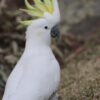
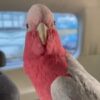
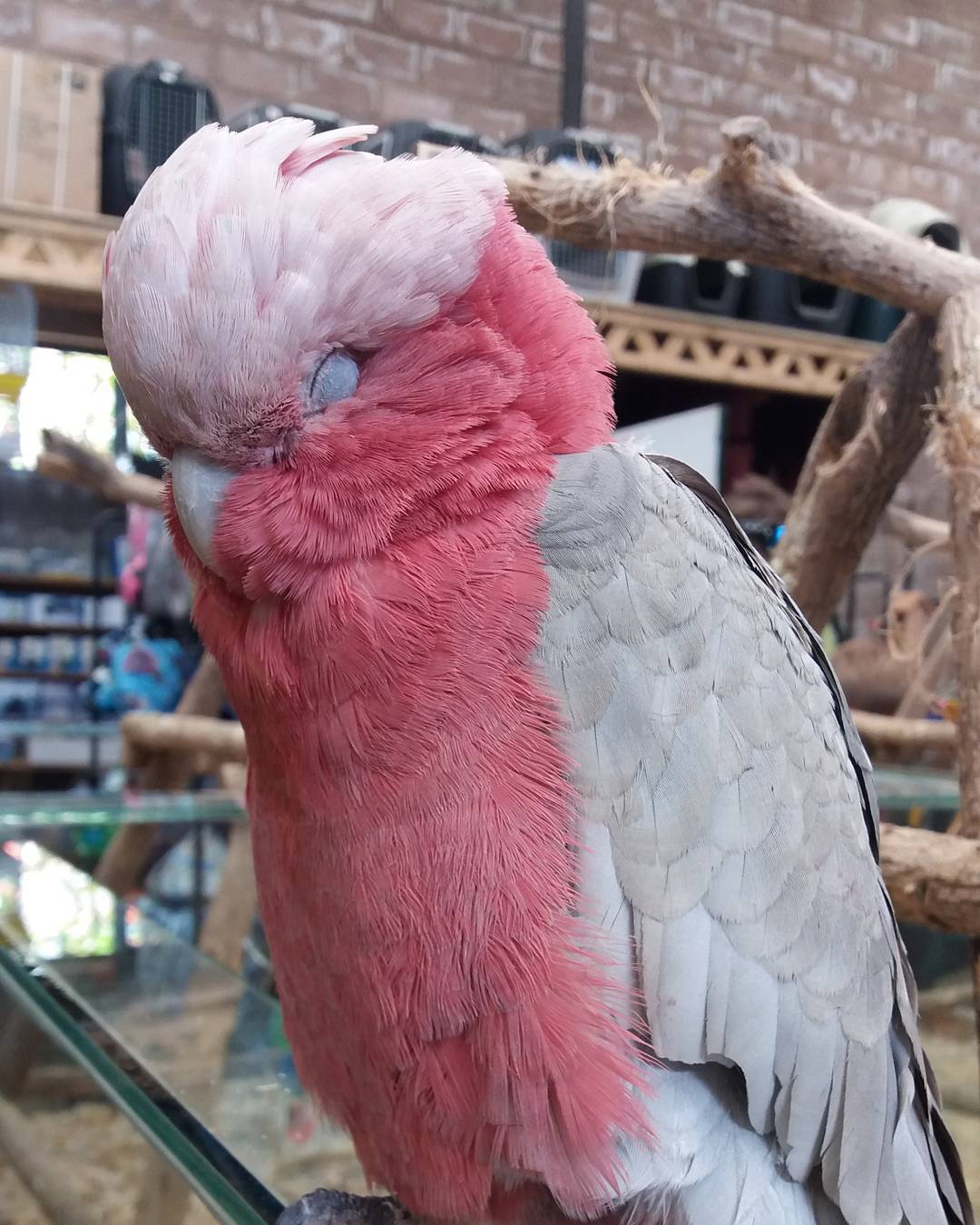
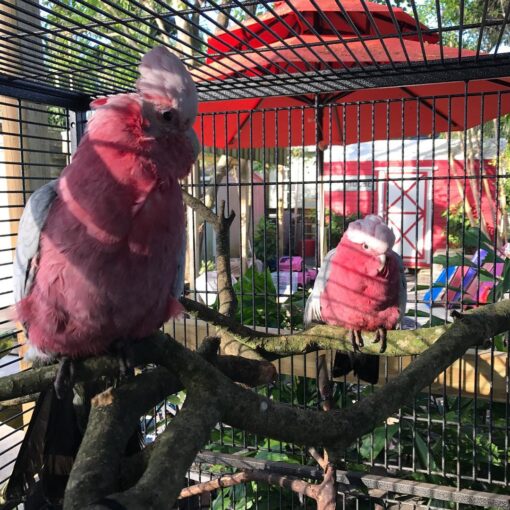
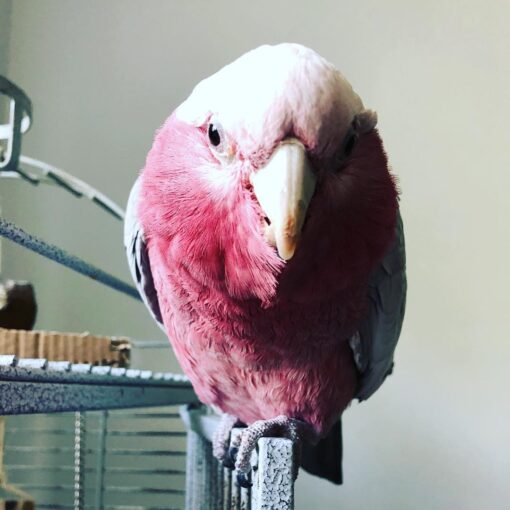
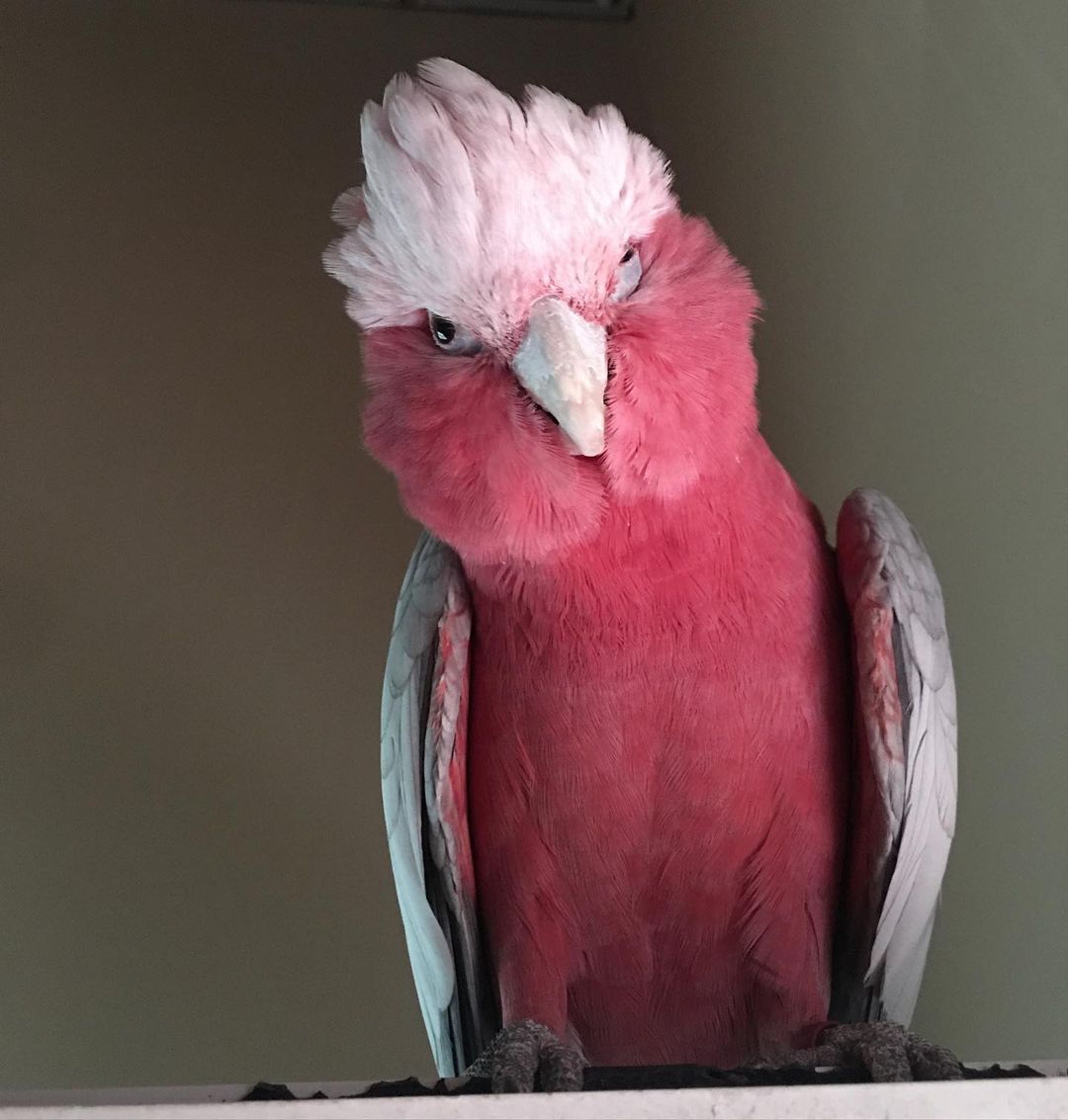

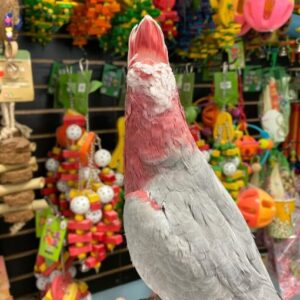
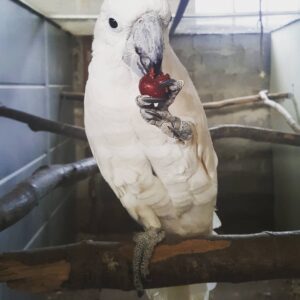
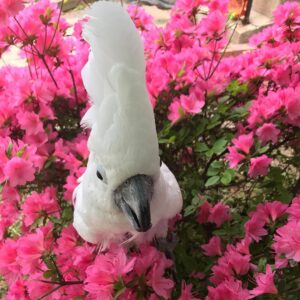

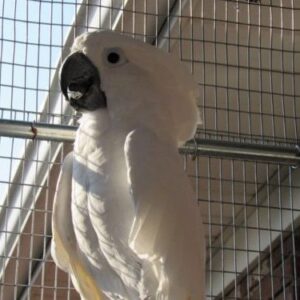
Reviews
There are no reviews yet.